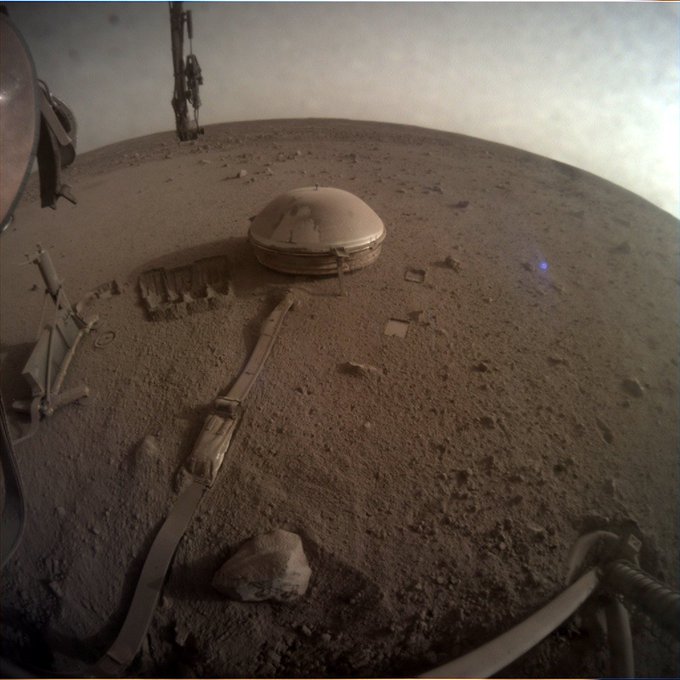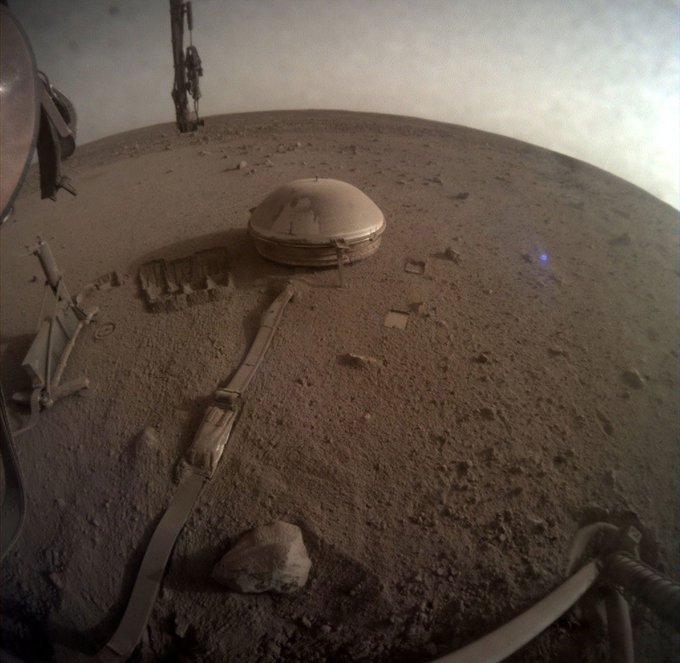NASA InSight Mars Lander’s last image? Credit: NASA/JPL-Caltech
We have known for a while that the end was near for NASA’s Mars InSight lander, as the spacecraft’s power supply continued to dwindle from windblown dust accumulating on its solar panels. Now, it seems that day has come. The
This was followed by a Tweet from the NASA
NASA’s Mars Interior Exploration using Seismic Investigations, Geodesy and Heat Transport (InSight) mission launched on May 5, 2018, from Vandenberg Air Force Base, California. After a 300-million-mile journey to Mars, InSIght touched down on the Red Planet near the equator on the western side of a flat, smooth expanse of lava called Elysium Planitia on November 26.
The mission’s science goals were to uncover how a rocky body forms and evolves to become a planet by investigating the interior structure and composition of Mars and to determine the rate of Martian tectonic activity and meteorite impacts. InSIght achieved its primary science goals in its first Martian year (~2 Earth years), and NASA extended its mission to focus on producing a long-duration, high-quality seismic dataset.
During its time on Mars, InSight’s seismometer felt multiple meteor impacts, detected more than 1,300 marsquakes, and shed new light on the Red Planet’s interior:



